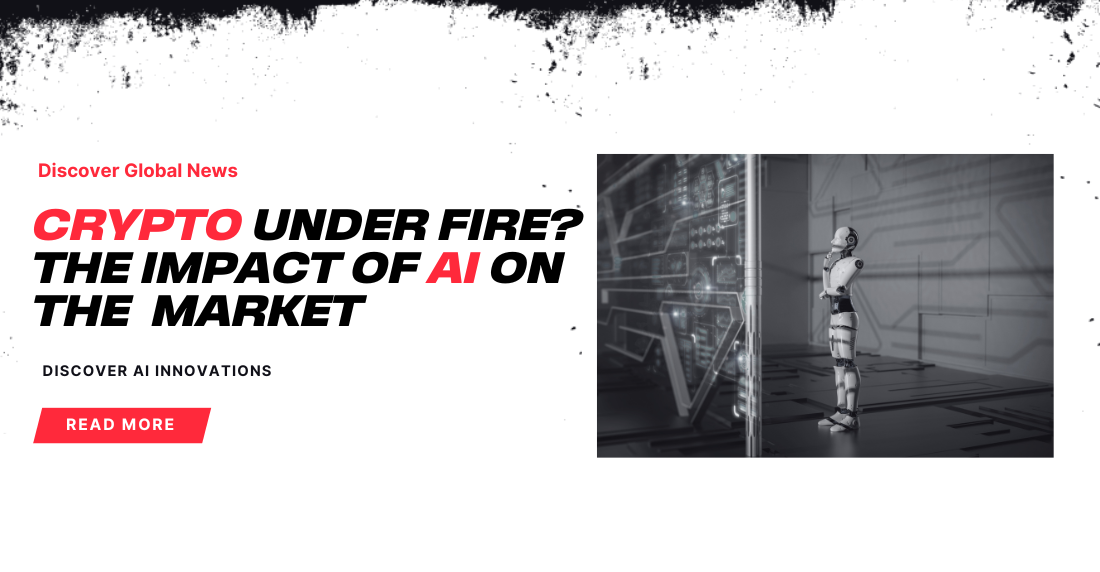
Bitcoin and Cryptocurrency Struggle in Volatile Market
Bitcoin and crypto fell sharply on Monday, as it tracked a broader decline in equity markets on fears over the U.S. President Donald Trump’s tariff threats, while growing concerns about the potential implications of Chinese artificial intelligence advancements led to a spike in investor risk aversions. This retreat in the markets raises questions on the wider implications of both geopolitical and technological developments on crypto space.
Trump’s Regulatory Uncertainty Damps Market Sentiment
One key driver behind Bitcoin’s falling prices was the lack of clarity over regulation for cryptocurrencies, particularly during Trump’s week-old presidency. While last week Trump announced plans for new proposals to draft a regulatory framework for the digital asset industry, the lack of clarity over these proposals left the market spooked. In particular, his failure to directly mention Bitcoin in an executive order related to crypto regulation has sparked concerns that his policies may not be as friendly to digital assets as many had hoped.
It is less certain today whether the potential “national digital asset reserve” for Bitcoin, questions over whether it would even be so simple to set up are being asked. Any efforts to require Congressional approval for the reserve could face significant opposition from fiscally conservative lawmakers, further adding to the ambiguity surrounding Bitcoin’s future under Trump’s regulatory framework.
Moreover, Trump’s broader trade policies, including the threat of imposing tariffs on Colombia, have exacerbated geopolitical risk sentiment. Although the immediate tariff threat was defused when Colombia agreed to Trump’s terms, the mere fact that the U.S. president is willing to use trade tariffs as a political tool has left investors wary of potential broader tariff disputes, particularly with major economies such as China, Mexico, and Canada. This has created broader concerns about economic growth, which has weighed on both equity markets and crypto markets alike.
DeepSeek AI Disruption Adds to Market Volatility
Aside from concern about uncertainty in regulatory environments, Bitcoin also suffered from moves within the technology arena: the unveiling of new AI models by Chinese tech company DeepSeek. Over the past week, DeepSeek launched a new AI that it said would rival the likes of OpenAI’s ChatGPT at a fraction of the cost. The release of DeepSeek’s flagship model, DeepSeek R1, drove fears in the market about the long-term impact on U.S. tech giants like OpenAI and Meta Platforms, and concerns about the growing influence of China in the space.
DeepSeek’s traction at making AI available at high performance but at lower costs has called into question how much more of the recent AI infrastructure surge by major U.S. tech companies is needed or can be sustained. Analysts from Bernstein have recognized that DeepSeek’s models look impressive, but feel the wider market reaction to the launch of the R1 model was somewhat overblown. Bernstein analysts said the cost trajectories of AI models would continue to rise over the next few years to come, even as DeepSeek claimed it had reduced some costs as much as tenfold. A worry, they added, is that this rush of competition from DeepSeek, along with sustained increases in AI infrastructure spending, could result in an overheated market bubble that will eventually burst.
The Broader Impact of Trump’s Executive Orders on Crypto Funds
Despite volatility in both traditional equity markets and cryptocurrency markets, there has not been all doom and gloom in the crypto space. Following Trump’s most recent executive orders, net inflows to digital asset investment funds around the world from companies like BlackRock, Fidelity and Grayscale, came to a total of $1.9 billion last week. Optimistic investors bid prices up, as Trump signed a memorandum that set up a “Presidential Working Group on Digital Asset Markets” with a remit to create federal regulation on the issue of digital assets including stablecoins and including a study on whether a “strategic national digital assets stockpile” is required.
Even with these positive inflows, the general market remains extremely sensitive to exogenous factors-most especially those that are linked to Trump’s trade policies and regulatory uncertainties. With the recent White House focus on crypto regulations, many worry that further action by Trump would add further turbulence to an already turbulent market.
The Impact of the Federal Reserve’s Expected Hawkish Stance
If geopolitical risks and regulatory uncertainty weren’t enough, Bitcoin and other digital assets are facing pressure from broader macroeconomic concerns. Investors await the Federal Reserve’s meeting later in the week, when it is widely expected the central bank will leave interest rates at their current levels while maintaining its hawkish view on inflation. The decision of the Federal Reserve to go even further in the direction of policy tightening would surely make equity markets and cryptocurrencies even colder.
Interest rate hikes are sensitive to risk assets; accordingly, it could be assumed that Bitcoin might be similarly vulnerable, given the fact that higher interest rates make the cost of borrowing costlier and reduce overall market liquidity. For now, markets prepare for what could be hawkish rhetoric from the Fed that will further put pressure on riskier assets such as Bitcoin downwards. If that happens, the volatility of Bitcoin’s price will likely extend into the following weeks, given its still heightened correlation with the crypto market’s performance against the equity markets.
Final Thoughts: Navigating a Turbulent Market
From geopolitical uncertainty and regulatory ambiguity to technological disruption and macroeconomic apprehension, the storm in the cryptocurrency market seems perfect. Volatility, seen both in traditional equity markets and the crypto space, is underlined by Bitcoin’s recent pullback. While there may be a slight sense of optimism based on the new executive orders by Trump and how, for example, DeepSeek’s AI models may prove advantageous in the future, the market will continue to remain very sensitive to risk factors.
The investor class is set to watch actions by the Federal Reserve and signals from the technology industry for some sense of the next direction in Bitcoin and other cryptocurrencies. In the meantime, these complex and entwined risks could continue to shake the market around in the near term.



